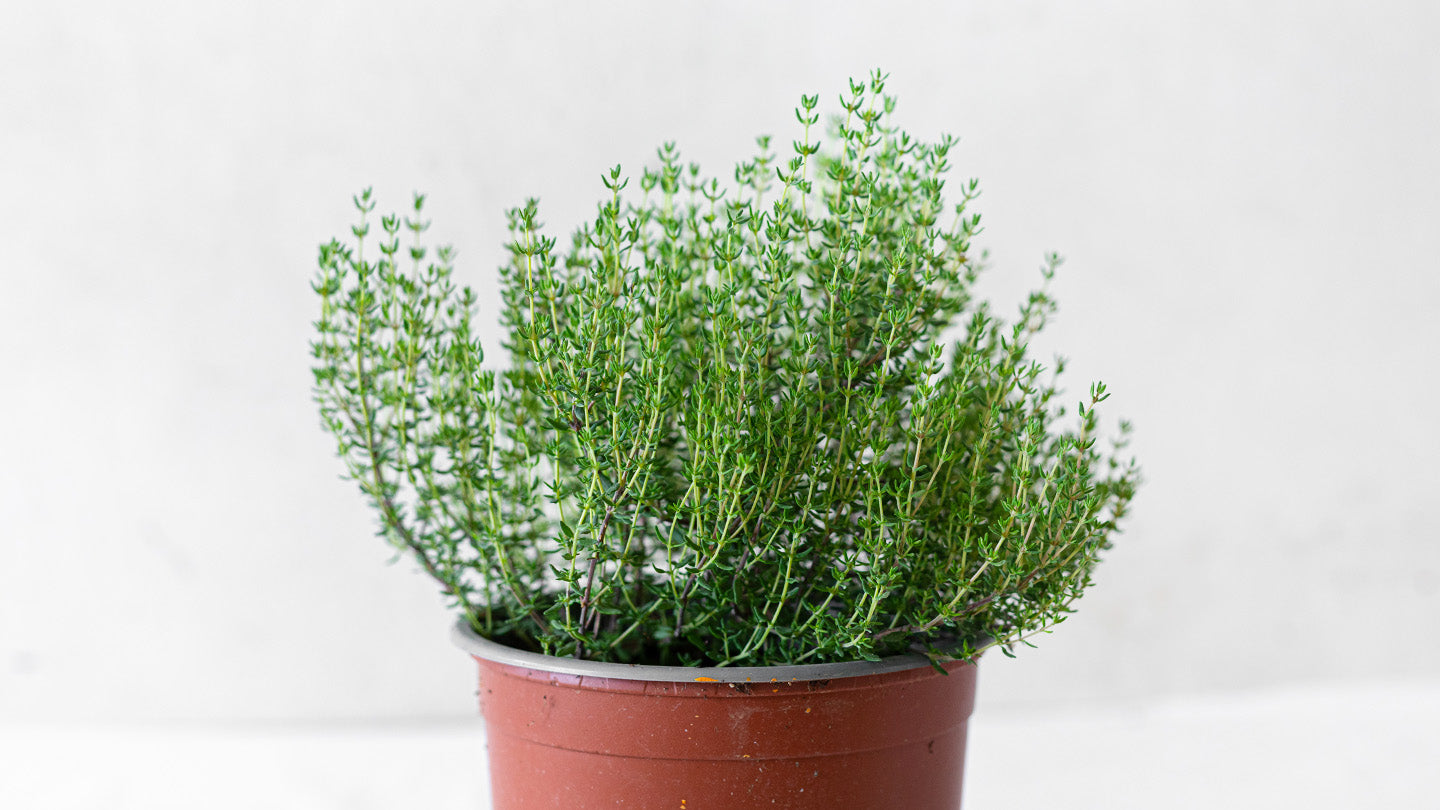cybloom
Thyme
Regular price
€5,50 EUR
Regular price
Sale price
€5,50 EUR
Unit price
per
Tax included.
Couldn't load pickup availability
Family: Lamiaceae
Origin: Mediterranean region
The Size: 6 and 12 inches tall
Temperature & Humidity: Thyme is native to the Mediterranean region, and it will thrive best in a hot, arid climate. As best you can, strive to maintain temperatures in your home between 60 and 80 degrees Fahrenheit, taking care to keep humidity to a minimum (that means keeping your plant away from rooms that tend to be more humid like kitchens or bathrooms).
Lightning: Thyme is a well-known sun lover preferring to be planted or placed in a location with access to full sunlight nearly all day long. A bright windowsill that receives eight hours of sun per day is ideal, but if your home is rather shaded or you're looking to keep your thyme thriving through the darker winter months, a snug spot under some florescent grow lights will work too.
The Soil: Soil is perhaps the most important element when trying to grow thyme successfully. Select a soil mixture that is very dry and well-draining, as thyme is particularly susceptible to root rot and overwatering.
Sandy mixtures are your best bet—if you choose to use potting soil you already have at home, cut it with a bit of gritty sand or gravel to ensure water moves through the soil quickly.
Watering: Once established, thyme plants are drought-resistant and often prefer to be under-watered rather than over-watered. Wait until the soil is completely dry, then saturate your thyme plant, allowing it to dry out again completely before giving it another watering. Keep in mind that thyme will flower, but unlike other herbs, this is not a sign of overwatering or bolting—it will continue to thrive beyond blooming if you trim it back to promote new growth
Fertilizer: How's this for simple: Thyme actually prefers soil that lacks nutrients, so supplemental fertilizing is not necessary. This also means that the herb is best planted in a pot or container by itself because combining it with other herbs will likely make the soil too rich for it to thrive properly.
Reproduction: Sow thyme seeds on the surface of a sterilized seed starter mix in a tray, and place it in a bright location at about 70 degrees Fahrenheit. Seeds can remain on the surface of the soil or just barely covered with soil. Once the seedlings sprout (it takes 14 to 28 days), they can be carefully transplanted into their final pots (or into the ground, if you're planting in the garden).
Transfer: When a thyme plant begins to develop woody stems more than tender leaves and shoots, it's time to repot the plant. Carefully remove it from its container, then separate the pieces of the root. Choose the smaller pieces for transplanting into new pots. Choose small pot about four inches in diameter. Repot the plants with the proper mixture of potting soil, as described above.
Features of Care: When growing thyme indoors, the biggest challenge you'll face is ensuring the plant receives consistently bright light. Beyond that, caring for thyme is straightforward (average soil, average watering, and average temperatures, among them), making it a great indoor herb for novice gardeners to grow.
Difficulties: Thyme grown in containers can become tall, so place it in an area where high winds won't knock it over. Watch for pests throughout the growing season and treat them appropriately if they happen to show up. Because this is a culinary plant, use only organic treatments.


